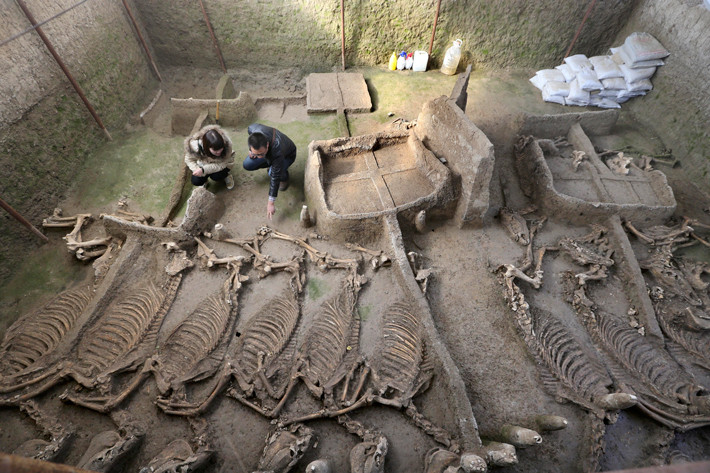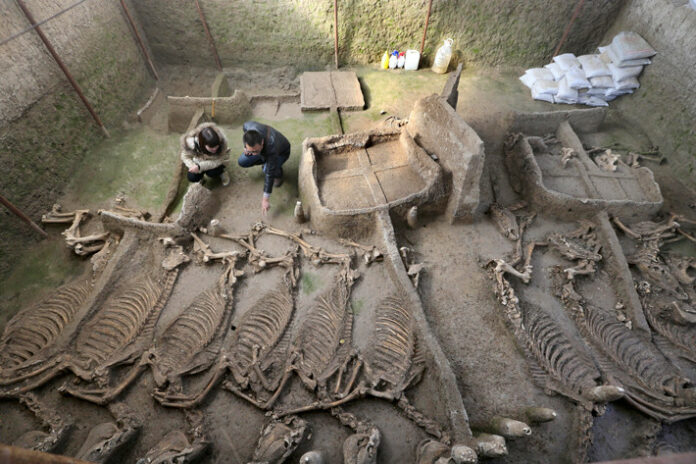In a village near the ancient city of Luoyang, in China’s Henan Province, archaeologists have uncovered a remarkable 2,500-year-old tomb that may shed light on a forgotten ethnic minority tribe known as the Luhun Rong. This extraordinary find has captivated researchers and history enthusiasts alike, offering a tantalizing glimpse into a lesser-known chapter of China’s rich and complex past.

The Tomb’s Revelations
Skeletal Remains and Artifacts
Within the tomb, archaeologists discovered a treasure trove of artifacts, including skulls and bones from cows and rams, suggesting the burial site may have belonged to the Luhun Rong tribe. This ethnic minority group, described in historic texts as “barbarians,” flourished during the Spring and Autumn Period (771–476 B.C.) of the Eastern Zhou Dynasty, before being eliminated in the subsequent Warring States Period (475–221 B.C.).

Among the remarkable finds were numerous chariots, skeletal remains of horses, bronze bells, bronze tripod vessels used for rituals involving food and wine offerings, and cowrie shells – some of which may have originated from as far away as the Indian Ocean or the South China Sea.
A Glimpse into Ancient Traditions
The artifacts and burial customs observed in the tomb are characteristic of the traditions practiced by royal or wealthy families during the Eastern Zhou Dynasty and the latter part of the Shang Dynasty (1600–1046 B.C.). This discovery not only sheds light on the enigmatic Luhun Rong tribe but also offers valuable insights into the funerary practices and social hierarchies of ancient Chinese civilizations.
Significance in Historical Context
According to Robert Murowchick, a Boston University archaeology professor, the significance of this tomb extends beyond its potential connection to the Luhun Rong tribe. “This is a great find,” Murowchick stated, “But the importance of the tomb does not hinge only on the connection to the Luhun Rong. It is important because it was found in Luoyang, where not many tombs from the Eastern Zhou period have been excavated.”
Conclusion
The discovery of this remarkable tomb in Luoyang has captivated archaeologists and historians worldwide. While the conclusive evidence linking it to the Luhun Rong tribe remains elusive, the wealth of artifacts and skeletal remains found within its walls offer a tantalizing glimpse into the lives and customs of an ancient and enigmatic people. As researchers continue to unravel the mysteries of this tomb, they may uncover secrets that could rewrite the pages of Chinese history, filling in the gaps and shedding light on a forgotten era.

